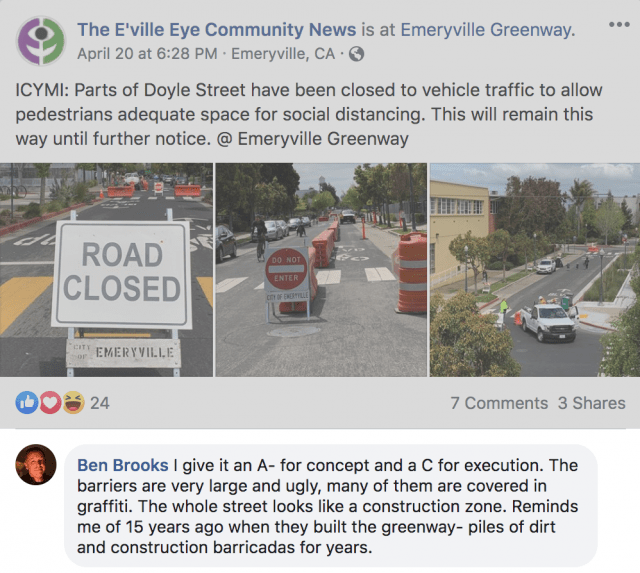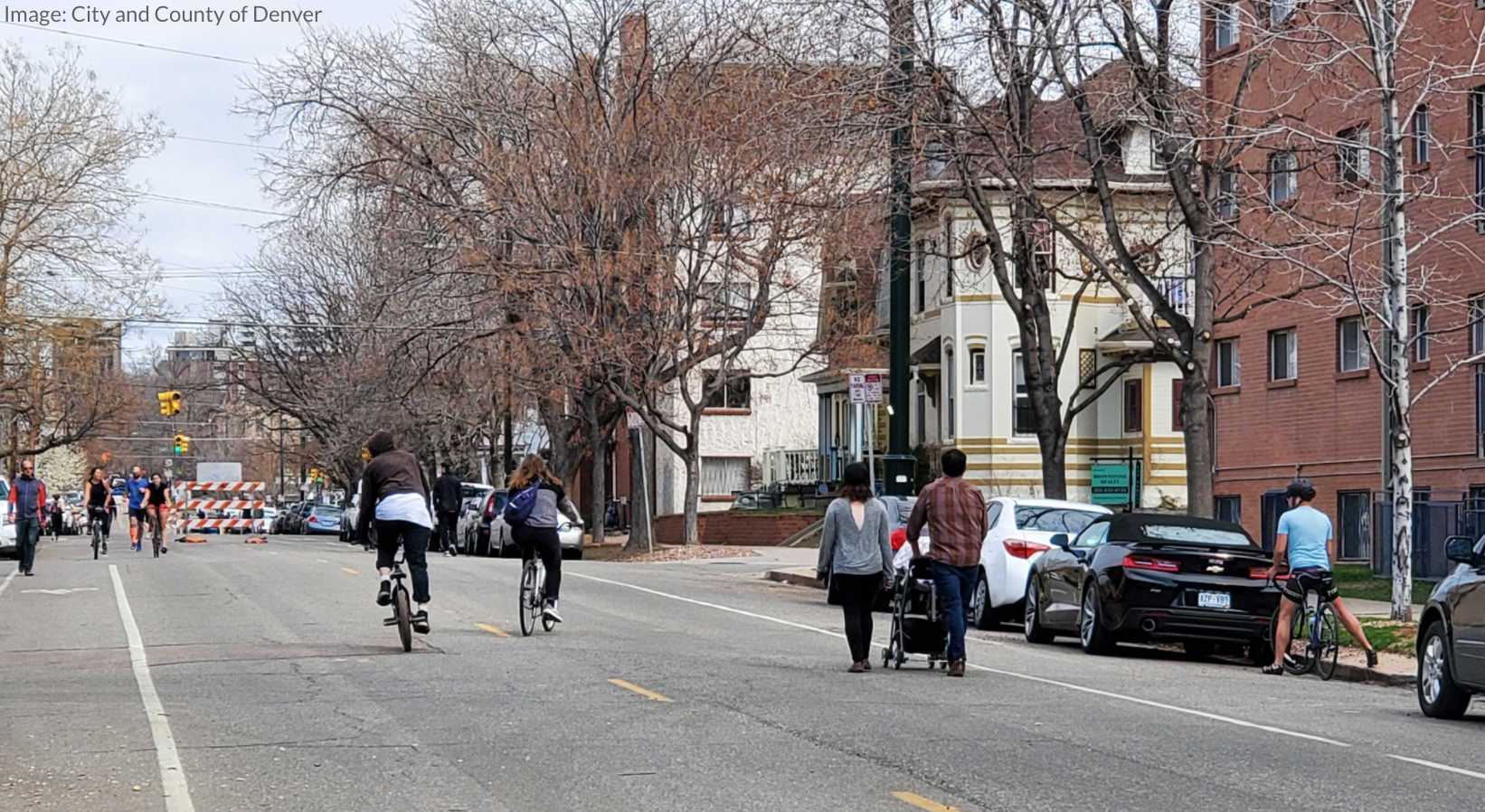Editor's Note: This article originally appeared on Smart Growth America and is republished with permission.
The burgeoning open streets movement brought on by the pandemic has created more space for people, provided lessons in how to quickly test ideas successfully (like in Minneapolis and Oakland) and unsuccessfully (like in New York City), and shown that the responses by cities to rapidly changing needs can be equally rapid. (Plenty of other cities, including our home base of Washington, DC, have tried almost nothing, instead leaving people at risk on crowded sidewalks while wide streets sit empty and wasted as trips have evaporated.)
But what if cities partnered with artists for a more sophisticated approach to the materials, design, and aesthetics of these open streets experiments?
Smart Growth America’s arts & culture team has spent the past few years building the case for involving artists in transportation projects. We’ve tracked and analyzed successful artist/transportation collaborations, supported exemplary projects, and trained artists, administrators, planners, and engineers to successfully collaborate. Spawned by mutually beneficial collaborations between artists and transportation professionals, we have seen dozens of examples of projects that better reflect the culture of their communities, meaningfully engage residents, mitigate construction, and relate to the spatial dynamics of their surroundings.
As cities respond to the pandemic by becoming more willing than ever to experiment with pilot projects in their streets, we have three pieces of advice on making these projects even better, derived from our work with artists.
1) Public artists’ expertise on materials, legibility, and scale could help cities make their open streets projects even better.
Cities have, understandably, relied on the materials they have at hand, including construction barricades and police tape, to demarcate open streets. However, these material choices can unintentionally send the wrong message—instead of welcoming us into these safe spaces for social distancing, construction barriers and police tape tell us to stay away. What if cities commissioned artists, who are struggling to find alternative revenue streams to make up for all of their cancelled projects and shows, to create something that better reflects those who make up the street’s community? With this approach, while still prioritizing speedy deployment and unified signage to send a clear message to drivers, the open streets barricades could be constructed differently for different parts of each city, referencing hyper-local aesthetics rather than the aesthetics of the police department.
And while we’ve seen cities relying on messages printed on 8.5? x 11” pieces of paper, many artists have long experience with creating art that can withstand the elements while also conveying important messages both literally and through metaphor. They don’t have to be major projects, but cities should find ways to tap this expertise.
2) Artists can help make open streets pilots more loved by their neighbors, and therefore more likely to survive in a post-pandemic world as permanent improvements.

Smart Growth America advocated for creating more spaces for people long before the pandemic, and we’ll continue this work after. Wouldn’t it be wonderful if some of the successful open streets pilots become permanent so we can begin to more properly distribute our public space between cars and people? The better looking and more clearly demarcated these open streets pilots are, the more likely they are to stick around after the pandemic. Artists can help make that happen.
For example, the small city of Emeryville, CA has closed parts of Doyle Street to vehicles to create more space for people. Doyle Street is an on-street portion of the Emeryville Greenway, a multi-use trail that connects Emeryville to its neighbors, Berkley in the north and Oakland to the south. While most of the reception has been positive, some residents in the area have complained about the aesthetics and execution of the project. Tapping the creativity of the arts community could help this project and others like it garner more public support.
3) This is a great chance to introduce city transportation staff to artists as a resource they can tap in the future.
We don’t have to wait for the next pandemic to bring artists onto transportation project teams. We already know that their involvement can help bring new, out of the box approaches to deliver better transportation projects.
With cities exhibiting new comfort with experimentation, largely out of necessity, now’s the time to double down by trying out new partnerships with the artists and designers whose skills would be as useful as they would be on any transportation project. Every community in the country has artists, and most have organizations that specialize in curating, hiring, and setting up partnerships with artists. Now’s a great time to start partnering with these organizations; with resources diminishing and need increasing, we’re only going to find a path forward by relying on one another.
Stay tuned for more information about some upcoming opportunities from Smart Growth America to foster these connections and help implement these three pieces of advice.






